
Online Child Psychology
Adapting in-person developmental psychology studies to an online platform
Research - Psychology
@ New York University
Duration
1+ years
March 2020 - June 2021
This long-term endeavor was part of my work at the Lab for the Developing Mind at NYU. As a lab manager, facilitating this transition was one of my main responsibilities.
Along with developing their online methodology, I also aided in the development of the original in-person protocols for these studies.
Overview:
Due to the COVID-19 pandemic, our research lab, which relied on in-person studies with children, could no longer operate as such. In order to continue our research, we looked for ways to adapt our currently running in-person studies to a completely online format.
Associated institutions and platforms
by
Study 1 - Drawing Study:
The goal of this study was to investigate how children interpret the same scene/layout in different contexts. They were provided with a configuration of elements in 2 sizes which we called a fort and a toy. Children were asked to draw a picture of whichever of the 2 conditions they were presented with.
Since what kids draw reflect what they pay attention to and prioritize, the numbers and types of each element in their drawings were measured to explore any differences in interpretations between conditions/contexts.
In-Person Methods
Conditions


Fort Condition
Large enough for someone to walk around in
Toy Condition
Small enough to be picked up with one hand
Drawings & Data
Children produced drawings after exploring the fort or toy. The researcher asked the children to label each element that they drew and made annotations on a photo of the drawing

Example of a drawing
Original child's drawing in pencil
Labels & annotation by researcher in red
Online Methods v1
We first attempted to adapt this study to the online platform by using videos of both the real fort and toy. We filmed people interacting with the fort and toy hoping to convey the context to a child watching the video on their screen.
The study was hosted on an online study platform called Lookit, developed by MIT. The platform allows stimuli to be presented to participants on their screen while they are recorded by their webcams. The video and audio data are sent to researchers.
Conditions
Videos presented to the child participant (clips of full videos below)
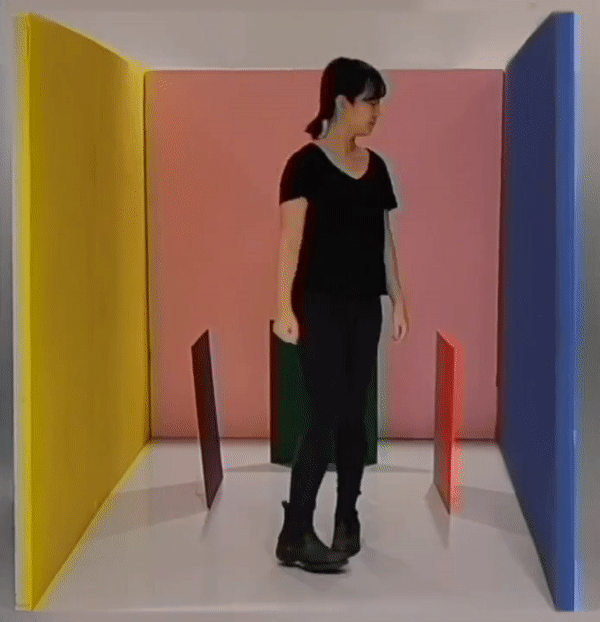
Fort Condition
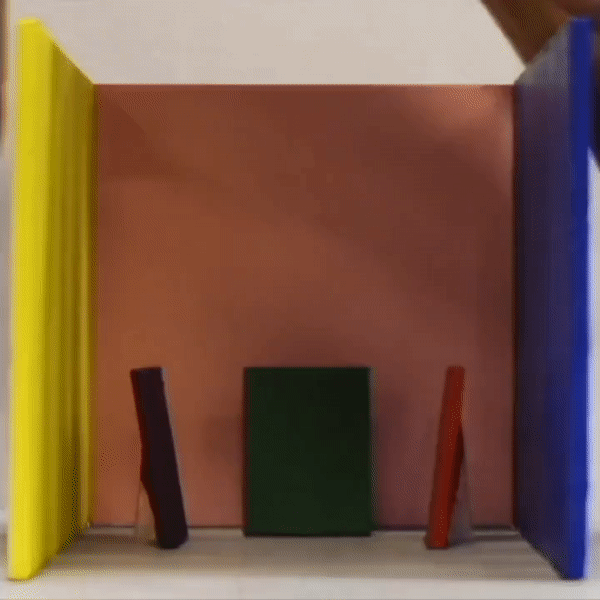
Toy Condition
Drawings & Data
Children produced drawings after watching videos of the fort or toy. They were instructed to hold their drawing up to the webcam so that the researchers are able to see their drawing.

Child holding drawing

Drawing being coded
Screenshots of the images were standardized and corrected for minor issues like perspective skew in Adobe Photoshop and then coded and annotated as straight-line vectors in Adobe Illustrator. and exported as SVG files
Why Illustrator?
I suggested using Illustrator and coding the drawings as straight-line vector SVGs because the coordinate data allowed us to automate certain analyses and gain powerful insight about the composition of the drawings to further explore difference between the two conditions, including:
-
Number of elements
-
Perimeter of elements
-
Area of elements
-
Overlap between elements
Insights
After testing several versions of this method using videos of the real life fort and toy with several hundred children, we were not seeing as powerful of a difference between conditions as we saw in the in-lab results. This prompted us to rethink our presentation of the stimuli. How could we further enforce the contexts of the fort and toy so that they are salient to the child?
Online Methods v2
Our second iteration of this study involved animated 3D models of the fort and toy made in Blender. We hoped that by providing children with a first person perspective of the fort and toy, similar to what they would see if they were exploring them in real life, the contexts would be more recognizable and apparent.
The study continued to be hosted on Lookit. The method of coding and annotating the drawings in Illustrator remained the same.
I developed the models and animations in Blender. The perspectives reflect the first-person perspective of a 4 year old child handling the toy or walking around the fort in order to keep as much consistency as possible. (clips of full videos below)
Conditions
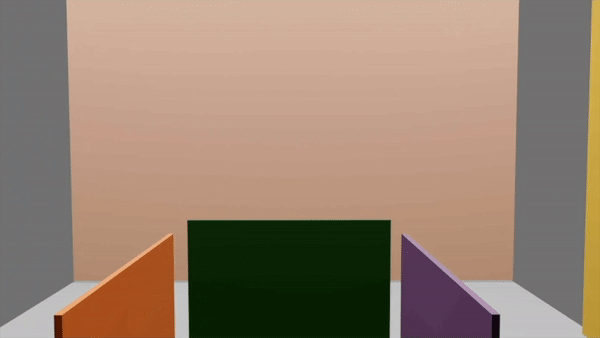
Fort Condition
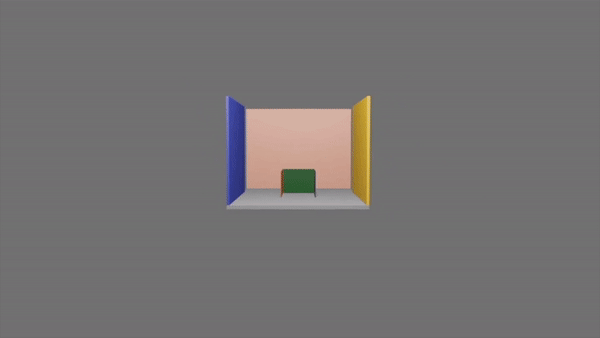
Toy Condition
Insights
As we began testing with these new 3D modeled stimuli, we saw a positive trend in results that better matched the results that we got from the in-person studies.
At the end of my time at the lab, this method was still being tested.
Study 2 - Angle Recognition Study:
The goal of this study was to investigate how toddlers interpret different types of changes in simple angles (relative length of an arm, angle measurement). After being shown one angle several times to familiarize them, the child is then presented with two angles: 1. The same angle that they were familiarized to 2. The familiar angle with a change to either its arm length or angle measurement, depending on condition
In-Person Methods
Setup
Testing took place in an empty room with projector. The parent/guardian sat with their child in their lab facing the screen. Video stimuli were displayed on the screen. The video was controlled by a researcher behind the projector wall.


Familiarization
Children were familiarized to a certain angle by displaying it several times on the projector screen. The angle traveled down the screen while rotating and was verbally labeled each time it appeared with a nonsense (fake) word (e.g. "Toma") by a narrator. If familiarization is successful, the child will know the angle as a "Toma".

Trial
After familiarization, a researcher entered the room and presented the child with 3D printed, physical angle toys on a tray. One of these is the "Toma" that the child was familiarized with, and the other is an angle that differs either by arm length of angle measurement.
The child is asked if they can find the Toma and grab it. The child's choice (or lack of choice) is recorded.
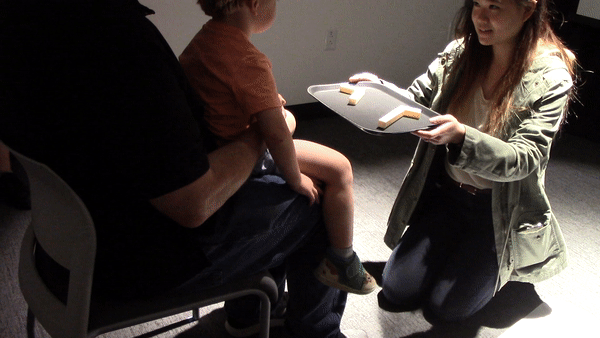
Online Methods
Similar to the drawing study, I utilized Blender to adapt this study to an online environment. For this study, we used Zoom videoconferencing to meet directly with parents and children since the study is contingent or real-time interaction

Familiarization
The familiarization method with the "Toma" angle remained the same. The video of the Toma was presented via screen share to the child.
Trial
After familiarization, a video is presented with a 3D rendered version of the two angle choices on a tray. The model and animation were made to match the perspective that a child would see in-lab, to keep as much consistency as possible.
The narrator verbally asks the child if they can point to the Toma.
The use of Blender allowed us to easily generate many different combinations of angles and conditions to test.


Comparison of physical angles and 3D models
Insights
Testing with these 3D rendered videos over Zoom seemed to be successful. Children were engaged and were producing similar results and behaviors as those observed in-person.
At the end of my time at the lab, this method was still being tested.
All media of participants (adults and children) are shared with the explicit consent of a legal parent or guardian



